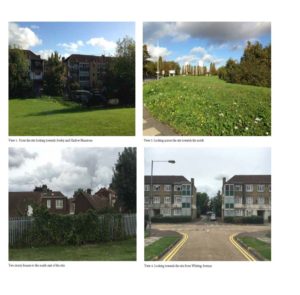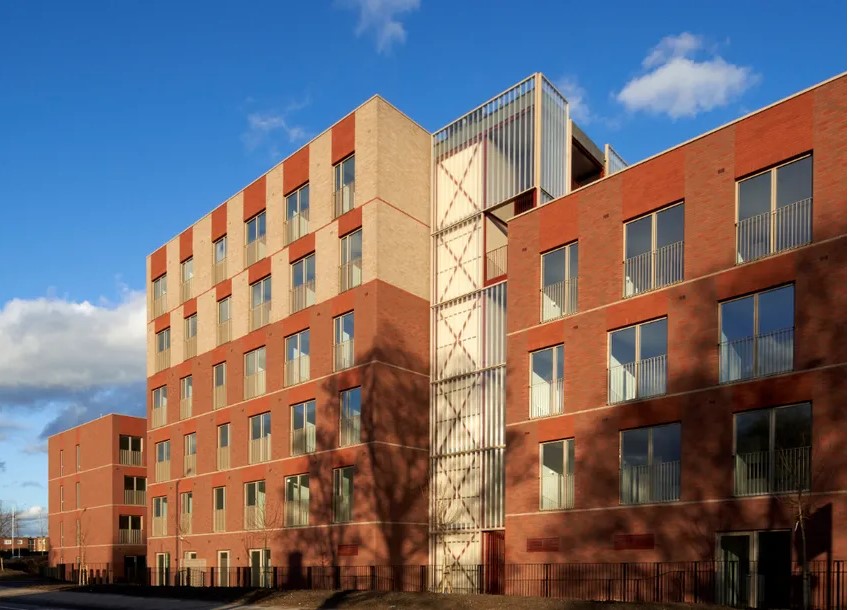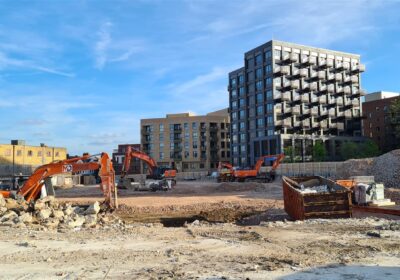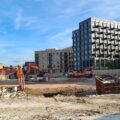I was really pleased to visit Harbard Close earlier in the month, Pocket’s first scheme in the London Borough of Barking and Dagenham. The Borough is rapidly changing thanks to a proactive attitude amongst the Council’s Members and Officers and we were lucky to be one of a new wave of developers to invest.
The origins of Harbard Close
I remember sitting in Jeremy Grint’s office some five years ago throwing ideas around as to how we could work together. Darren Rodwell, the Council’s then new Leader had expressed an interest in housing first time buyers alongside a range of other exciting proposals, many of which he is now fulfilling. I had been tasked alongside Jeremy, Barking’s long serving former Regeneration chief and David Harley to figure out a way of bringing some Pocket homes to the Borough.
The challenge was finding a site which was viable. Barking’s price point in a London context was already relatively affordable so trying to deliver a discounted product like Pocket represented a significant viability challenge. Build costs across London for high density did not range as much as value and so with relatively fixed costs to contend with, identifying a scheme which would work without grant was going to be tricky. On the plus, if we could bring Pocket to Barking we all knew we’d be bringing a very credible first time buyer option to the Borough.
As we turned ideas over I looked up at a map adorning the wall next to Jeremy’s desk. The map detailed Barking town centre displaying the various ownerships including the Council’s. A generous strip of land on the edge of the town centre caught my eye. It seemed to be unallocated but appeared to have some potential.
When I enquired, Jeremy furrowed his brow and looked at me and said: “That is not something you want to go anywhere near Nick.” He paused before explaining that the land I was referring to, essentially a grassy verge, had been heavily contaminated by previous industrial activities.
Jeremy and David were probably a little surprised when it appeared my enthusiasm had not diminished. My view is when it comes to brownfield sites nothing should be ignored.
As I left the office we agreed collectively we would give it a go. Looking back, Jeremy’s experience probably told him it would come to nothing. But his experience also told him that it was worth the punt and sometimes these things can come off. We left the meeting with an agreement that if we could make it work, the Council was there to help us.
The site
The site is located between Whiting Avenue and the A124, approximately 600m to the west of central Barking. When I first visited it was an inauspicious grassy verge. There were merits. It was not far from Abbey Green, a tranquil park and it was a short walk into the town centre. There were also signs of early development activity with the Abbey Road retail estate looking likely to come forward. It is now being delivered by Western Homes and is looking great – another testament to the can do attitude of the Council.

There was however a big problem. Jeremy had not been wrong about the site’s challenges. After some soil testing it was clear the made earth on the site was heavily contaminated with asbestos. Significant site remediation would be needed. A yawning viability hole had opened up and I was beginning to wonder whether I had been wrong not to take Jeremy’s words of warning to heart.
Public private partnership
I often write about the importance of public private partnership on this blog and I’m absolutely convinced that it works if you can find common objectives. Barking wanted to see activity and investment in and around the town centre. We were committed with our partners at the GLA to invest some of our programme commitments into the Borough. The question was how.
It was then that our partners at the GLA pointed out that MHCLG had just launched a new brownfield remediation fund aimed at affordable housing for first time buyers. We couldn’t believe our luck.
Working with David Harley at Barking and the GLA, we hastily pulled an application for funding together using our professional team’s expertise to estimate the cost of the remediation. We turned the application around in the space of about a week and the Council submitted the application. Within eight weeks we had our answer. The fund commited to cleaning up the land on the basis we would deliver a Pocket scheme. All three tiers of Government were aligned despite the varying politics. This was going to happen.
The scheme
At Pocket we are always on the hunt for fresh architectural practices and were delighted to bring in Reed Watts to help deliver the scheme. A first class pair of architects who had worked in a larger practice on one of our earlier schemes they came up with a scheme arranged in two blocks with a new pedestrian route and secluded courtyard gardens for future residents.
The structure was pre-fabricated off site to reduce disruption to the residents and a brick material was used to keep close to the local architectural vernacular. The proposal was popular with Members and was supported by the Committee with 78 homes being built by Mclaren construction.
The result is a really great pair of buildings which literally came from nowhere. We are now in sales mode and have a third of the homes are already occupied by first time buyers. One of the pleasures of property development is seeing a longshot like this site turned into homes for Londoners.










